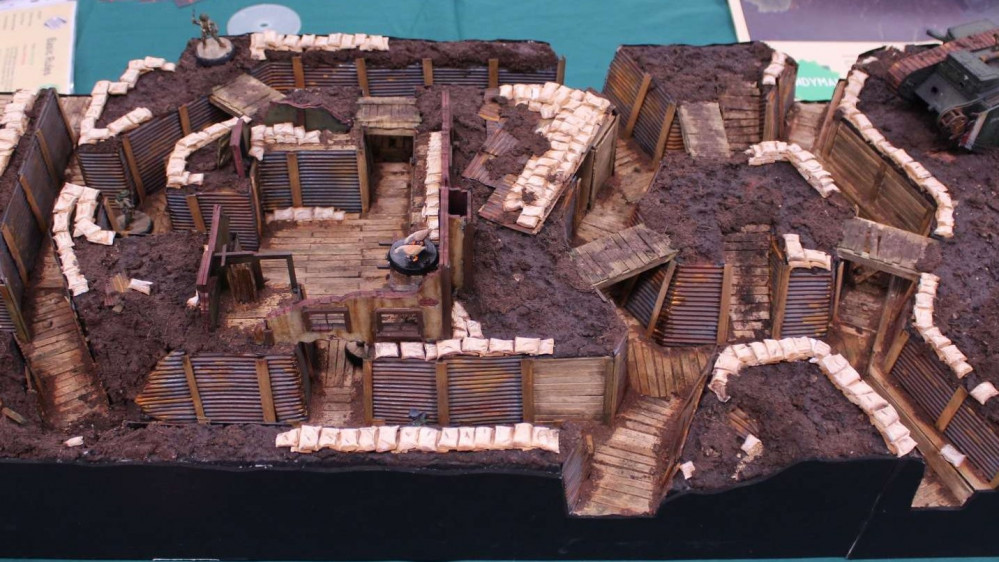
Trench Offensive
Two player starter set
Having played a demo of this game at Diceni in Norwich 2023, I decided to pick up the two player starter and explore what the game had to offer.
The first job is to paint the miniatures. The box comes with six 3D printed resin miniatures, 3 British and 3 German.
The miniatures are single piece sculpts with separate heads. The resin was hard but not overly brittle. I had no breakages in the box or during cleaning up the worst of the support scars. (I did manage to drop a British mini during photography onto a tile floor and he broke clean through a leg. Superglue rescued it though.)
The miniatures come supplied with 32mm round flat topped GW style bases with sloped edges. I wanted to recreate a ‘duck board’ trench effect on the bases prior to gluing the models into place for painting. I did this by getting a few coffee stirrers and clipping them into approximately 40mm lengths then gluing them with superglue to the bases, butted up against each other. My stirrers filled the base almost perfectly when laid 4 side by side. After the glue was dry I used my ordinary hobby clippers to just nibble away the wood overhanging the base edges.
The miniatures were glued into place with superglue and then they were primed with Vallejo Ghost Grey Primer through an airbrush.
British paint scheme
Having only painted a small number of WW2 models previously, I was unsure of the colours that would be appropriate for the models in WW1. So I did an internet search for resources that would give me a steer on appropriate paint schemes.
The first thing that was apparent, was that there was far less information for WW1 out there than WW2. I’m guessing that this is probably due to the fact that media technologies like photography and video were either in their earliest years or non existent, and as such there was significantly less documented visual evidence of good quality from which to draw reference. I did find some reference images of period uniforms and equipment which had survived in museums etc. But again,
many sources stated that there was far less standardisation of uniform colours and similar, particularly at the start of the war, as manufacturing and mass production was a different animal at the turn of the century running up to the start of the war.
I had to make a decision on colour choices so I went with a reference drawing I found online which had an almost reddish brown uniform colour and pale webbing.
As usual all paints are Vallejo Model Color (VMC) unless otherwise specified. The actual paints used for my models looks like this:
Uniform – Flat Earth
Puttees and water bottle – Khaki Grey
Webbing – Dark Sand
Helmet – Bronze Green
Boots – Saddle Brown
Skin – Dark Flesh
Rain cape – German Camo Dark Green
Rifle stock – Mahogany Brown
Cup – White
Buttons and buckles – Black then Brass
Rifle fittings and barrel, spade blade – Black then Oily Steel
All 3 models had some sort of hair showing so I painted this Black on one Soldier and Beige Brown on two others.
The models were washed down with Citadel Agrax Earthshade to complete the painting of the models.
The painting of the bases was VMC Light Brown initially, then two separate wash steps. The first wash was Citadel Agrax Earthshade over the whole base. The second step was Vallejo Model Wash Oiled Earth applied only in the gaps between the boards to reinforce the dirty recess between the duck boards.
After everything was dry a quick coat of VMC Black on the base edge saw the models finished.
The Germans
The resources I found for the German paint scheme were a blog and the following image:
I could not find any good resources for painting the field kit so I had to wing it and use my own judgement on colours using this coloured drawing as a reference. With that said this is what I settled on.
Uniform – German Grey/German Uniform 50:50 mix
Puttees – English Uniform
Boots – Black
Mess kit and helmet – German Grey
Skin – Flat Flesh
Webbing and backpack body – Saddle Brown
Backpack fur panel – Tan Yellow
Water bottle – Light Brown
Bread bag – Olive Brown
Ground Sheet – Dark Sand
Blanket – Field Blue
Rifle stock – Mahogany Brown
Buttons and belt buckles – Black then Brass
Metalwork on the rifle and strap buckles – Black then Oily Steel
As with the British everything had a bath in Agrax Earthshade to finish things off. The basing was identical.
Overall I am happy with what I achieved. I think the German uniforms ended up too dark and could do with some highlighting up, but as these are primarily for gaming I’ll note that down as a maybe in the future.




































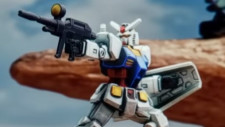




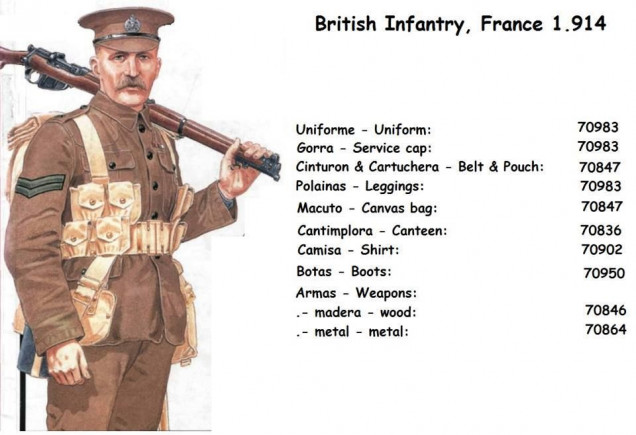
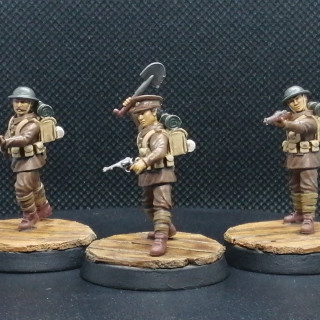
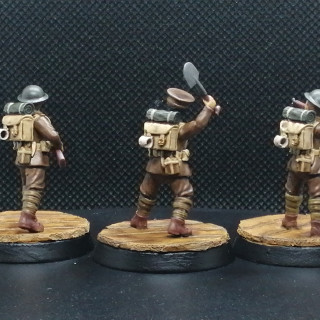
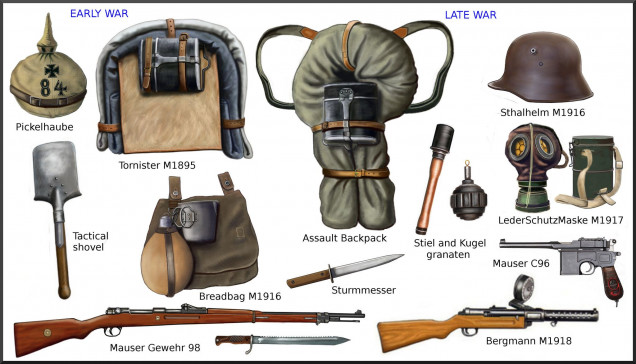
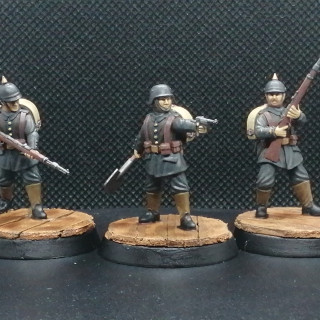
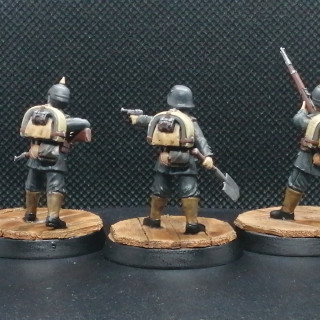

































Nice guide, this will be helpful as a starting point for my AWT forces
Really excellent guide and a well earned Golden Button. One question though… what is the tactical advantage of the geese I can see in the banner photo?
Educated guess but I think they are a marker for the carrier pigeon scenario in the rulebook.